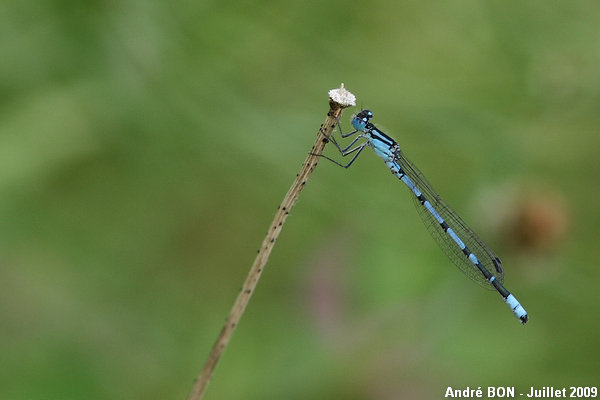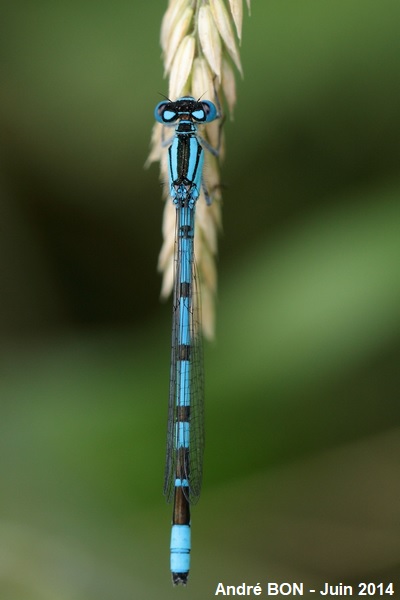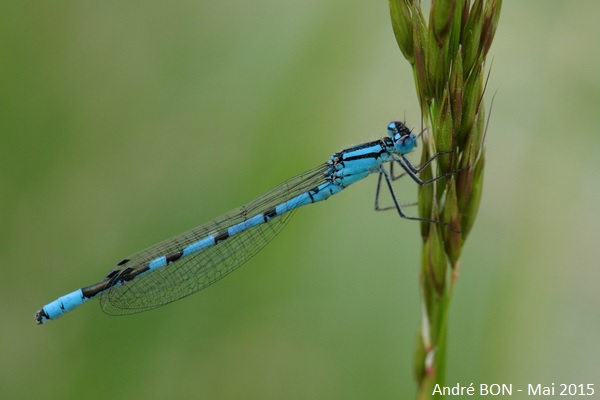




| Common Blue Damselfly (Enallagma cyathigerum (Charpentier, 1840)) |





|
|
Scientific name: Enallagma cyathigerum (Charpentier, 1840) Common name: Common Blue Damselfly Other names: Common Bluet French name: Agrion porte-coupe Order: Odonata Suborder: Zygoptera Family: Coenagrionidae Wingspan: 38 mm. Biotope: Lakes, ponds and slow running rivers. Geographic area: North Africa, Europe and Asia north to the Arctic Circle. Flight time: Late April to October. There are two broods per year in the southern parts of the range. The development cycle of the larva can last two years in the northern part of the range. |
The Common Blue Damselfly is often seen alone. You can recognize the males, which are blue coloured, by the mushroom-shaped patch located on the upper side of the second abdominal segment. Females, which are brown or blue, show black torpedo-shaped patches on the upper side of the abdominal segments 3 to 7. On both sexes there is a single black stripe on the side of the thorax. It is thinner that the blue stripe located just above. There are large post ocular spots. The pterostigmas are black. |
| [To know more about the Common Blue Damselfly] [Next picture] [Top] |

|
The criteria enabling to tell male Common Blue Damselflies apart are all visible on this picture. There are large blue post ocular spots. The sides of the thorax only show one black stripe which is thinner that the above blue stripe. There is a mushroom-shaped patch on the upper side of the second abdominal segment. |
| [To know more about the Common Blue Damselfly] [Next picture] [Previous picture] [Top] |

|
I have observed this Common Blue Damselfly near a woodland edge, at a distance of more than several hundred meters form the closest ponds in the surroundings. It has not been very shy and I have been able to get very very close. |
| [To know more about the Common Blue Damselfly] [Next picture] [Previous picture] [Top] |

|
Upper side view. |
| [To know more about the Common Blue Damselfly] [Next picture] [Previous picture] [Top] |

|
The post ocular spots can be mistaken for eyes by a potential predator. |
| [To know more about the Common Blue Damselfly] [Previous picture] [Top] |

|
One male again, I need to photograph one female now. |